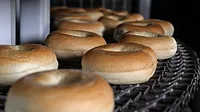Food Safety and Flooring
Proper Floor and Drain Design Combat Food Safety Challenges
The global food industry is expanding at a rapid pace, and many companies are investing in facility expansions, new plant construction and modernization projects. With this activity, food safety is essential as companies add new flooring and drainage systems to add efficiencies and scale for growth.
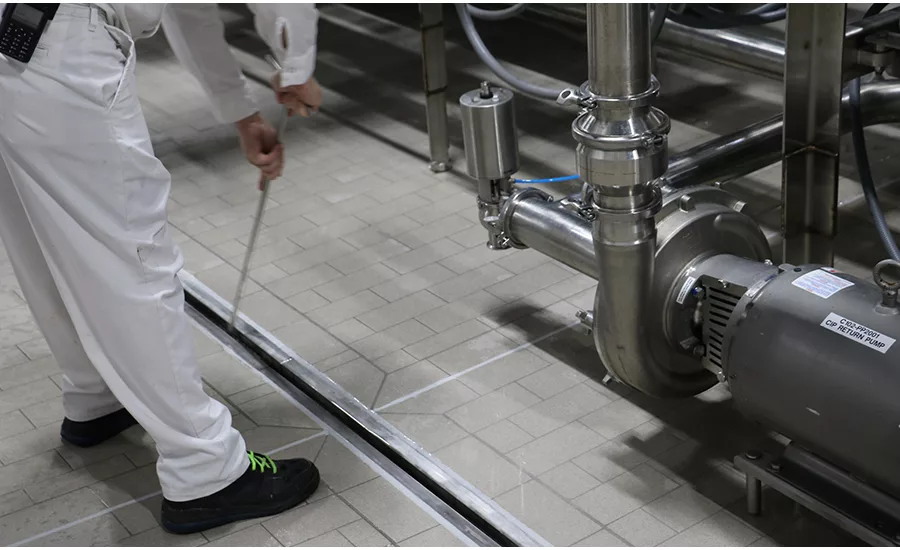
Dedicated drain cleaning is being done to a slot-drain and prevents cross-contamination of equipment. Image courtesy of FoodSafe Drains
The Centers for Disease Control estimates that listeria causes 1,600 illnesses and 260 deaths annually in the U.S. Listeria can be found in numerous types of food, including cheeses, packaged meat, uncooked vegetables and raw unpasteurized milk, yogurt and ice cream. According to the Centers for Disease Control, “Listeria is a hardy germ that can be difficult to fully remove from food processing facilities. If a facility has listeria germs, the germs can spread to food that touches contaminated equipment or surfaces.”
Proper food sanitation has never been so crucial as food manufacturers expand, run three shifts and modernize facilities. With these capital expansions, adequate flooring and drain design and cleaning protocols can be overlooked. “Floors, drains and air movement around equipment are easy to overlook and under-prioritize,” according to Ecolab.
Cutting corners around floors and drain design and reducing staff can be prime ingredients for biofilm and listeria. “Bacteria and listeria kill people and sanitation has to be the number one concern in a facility, and it’s not just the floor system,” says Viking Kristjansson, VP of sales engineering at FoodSafe Drains. “If a drain is improperly rated for loads, it will break apart and pull away from the concrete. When the drain pulls away from the concrete, crews can't fight the bacteria growing between the drain and the concrete.”
Improper design can also lead to standing water. “When a drain backup occurs, it’s important to have procedures in place to contain standing water to prevent traffic through it and remediate with effective sanitation and verify effectiveness through environmental swabbing,” says Scott King, VP of food safety at PSSI Food Safety Solutions.
PSSI’s Safe Foods Chemical Innovations carries multiple drain condensate pan water treatment options, such as drain rings and strips. “This technology allows for the gradual and simultaneous release of active ingredients through a polymer matrix,” says King. “Combined with an effective cleaning procedure and frequency, these products effectively combat the growth of odor-causing bacteria, mold, mildew, fungi and slime in the water.”
The rings and strips also lubricate drains to prevent debris from adhering to condensate pans, offering an unimpeded flow of water down the drain.
Design Considerations for Food Plant Flooring and Drains
With so many applications within food manufacturing, floor and drainage design depends on the company’s food production use case. Regarding wet processing, food processors need equipment to be washed down and use sloped floors. The next question is what kind of drains work best for a particular application and the food safety implications.
FoodSafe Drains has been manufacturing stainless steel drain systems for more than ten years and offers customers a comprehensive approach to drain systems, which include a concrete floor, drain types, underground drainage and floor coatings.
“Drains are exposed to harsh chemicals and heat, so they must withstand daily cleaning,” says Kristjansson.
Three main types of drains are used in today’s food plants are slot systems, trench drains and area systems—a fourth is floor sinks. “In my experience, trench drains have generally been on the decline recently, although their use still has practical applications,” says Joseph Bove, VP of design engineering at Stellar, a fully integrated company focusing on design, construction and mechanical services.
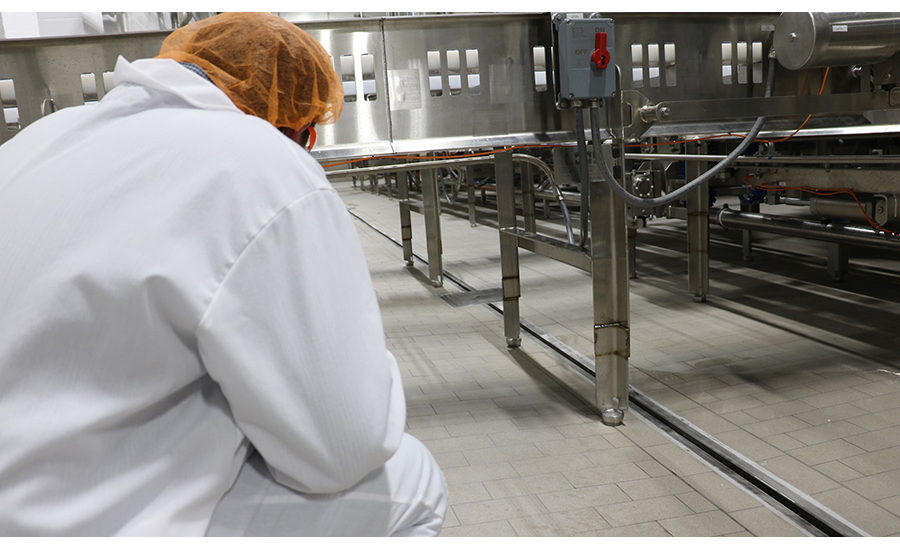
“The wider opening and long linear surface of the trench body/edge-to-concrete interface can become compromised over time due to equipment crossing the drain, which can create gaps, bacterial harborage points and maintenance issues,” adds Bove.
Food or beverage applications with large kettles, such as brewing beer, are suited for trench drains. Kusel Equipment, a manufacturer of stainless steel drainage systems, cites a recent use case by a craft brewer that located the trench trains near the processing equipment and kettles, including bar grate covers that have an NSF medium-duty rating and NSF special-duty ratings for the solid covers.
Meat or poultry processors are also prime candidates for trench drains. For example, poultry plants can have trench systems designed to convey feathers in one system while another conveys solids.
“Poultry processors are trying to collect unused portions of the bird, not suitable for human consumption, to use for feed and pet food,” says Kristjansson. “However, the number one issue we have found with trenches is too much poultry being stuffed into drains by personnel.”
“When that happens, the p-trap breaks, and it’s a mess,” adds Kristjansson. “Moreover, small, inedible foods and heavy soils will also clog drains; a reliable sanitation program is essential.”
“During a top-down first rinse, care should be taken to ensure drains are kept free-flowing,” says King. “Foam detergent should be applied starting with the floor and walls, and working bottom up on equipment—and this is the time for dedicated drain cleaning to prevent cross contamination of equipment.”
King suggests wet drains should be sanitized each day, and it may be necessary to implement deep cleaning weekly as part of the facility’s Master Sanitation Schedule (MSS) Program.
PSSI Food Safety Solutions also advises focusing on areas not addressed during routine cleaning programs. “Residual sanitizers may be maintained on floors or in drain baskets such as Quat rings or dry powder sanitizers,” says King. “It’s important that these are on a schedule for cleaning and reapplication to maintain efficacy.”
Besides trench systems and area drains, slot drain systems have become popular for new food facilities and retrofits. A big reason is minimizing slope areas in a floor slab and providing a narrower footprint versus a trench drain. This also applies to area drains, since these systems can have numerous drainage tunnels in a large washdown area.
“Unlike trench drains, slot drains have a slimmer design, eliminating the need for a grate covering,” says Bove. “With sloped floors, water will flow to the drain channel, diverting it to a collection tank for disposal. This allows floors to dry quickly, helping prevent slips and falls.”
Slot drains can be a good fit for food plants using automated guided vehicles (AGVs) or laser-guided vehicles (LGVS) since the design keeps floor slopes moving in a single direction parallel to the slot drain, which allows for strategic placement of catch basins.
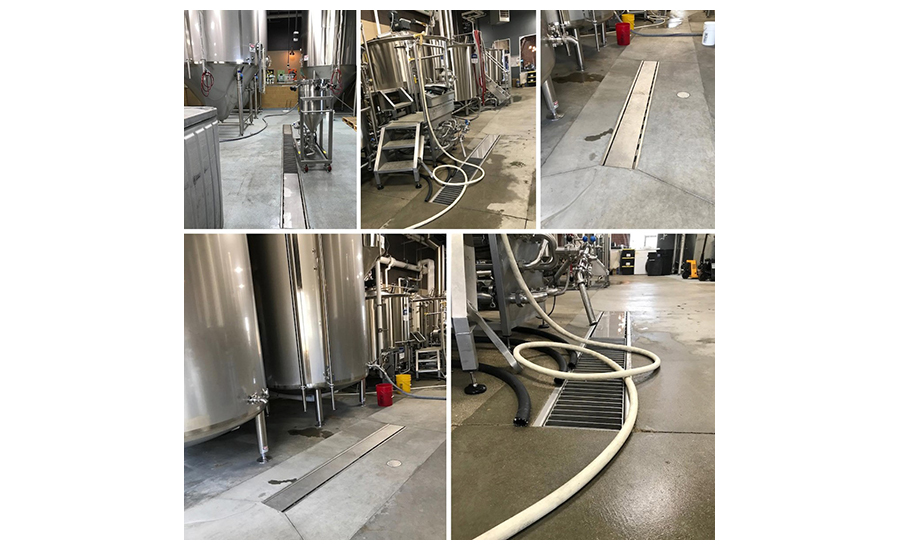
Drain Sanitation Solutions
As brands run multiple production shifts daily, plant floor sanitation routines are under pressure due to limited time between shifts. Instead of eight to ten hours between shifts, facility washdowns must happen in four hours. For this challenge, FoodSafe Drains designed a magnetic strainer offering a secondary stainless-steel basket for slot drains, which is locked via an industrial magnet. Maintenance can remove this secondary basket for quick access to debris that can be disposed of in garbage cans, instead of drains.
“The magnetically locked secondary strainer forces maintenance to follow cleaning routines and dump waste into garbage cans, not drains,” says Kristjansson. “The stainless steel surface with radius edges doesn’t allow for bacterial growth and permits easy disposal.” Also, FoodSafe’s Slot Hog is a hose connector that lets companies drain tanks directly into a slot drain channel.
Retrofitting Facilities and Food Safety Data
Kerry’s facility in Rome, Ga., FOOD ENGINEERING’s 2022 Sustainable Plant of Year, is an example of a large capital expansion project. The total cost of the expansion project was $125 million. The company targeted many food processing applications, but one was wet processing.
"For one of our wet process areas, we had very little flat surfaces and we had to excavate the floors and then slope the floors to drains,” says Aleisha Jaeger, Kerry North America’s director of project engineering in a recent July webinar. “We had to dig down 7 to 8 ft. in some cases, and we even found a granite vein that we had to work around in one instance.”
The wet process area also has cameras throughout to meet SQF audit processes, according to Kerry. “For the construction of the new facility, we worked with the cross-functional teams within the company from a cleanability perspective and an operational perspective,” says Jaeger. “We took all of the lessons learned, applied those against the sanitary standards and equipment design standards as well to really get the best of the best into this facility.”
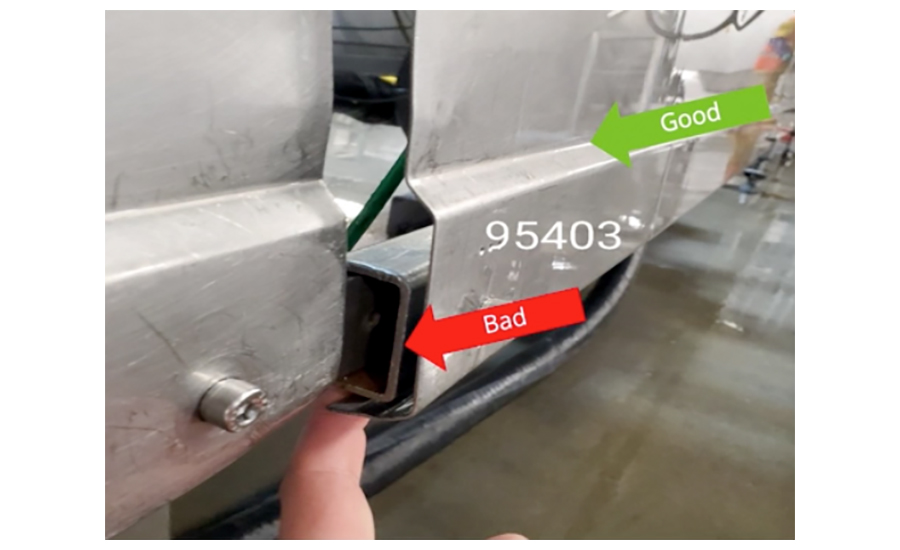
As mentioned, Kerry added data acquisition with its modernization project. Just like many other production areas within plants, connected data is essential for sanitation programs. Back in January, Ecolab launched the Food Safety and Quality Supervisor, a web-based platform designed for the food and beverage segment. The platform allows companies to digitize standard operating procedures (SOPs) and master sanitation schedules that can provide benchmarking and trends analysis. Besides scheduling, the platform can record sampling and testing for pathogens, incorporate quality data from manufacturing platforms and incorporate automated tools for adhering to testing standards, such as ISO 17025.
Going forward, food manufacturers are evaluating and implementing capital expansions to meet higher volumes, drive efficiencies and improve sanitary processes. Designing proper drainage systems and understanding floor requirements goes a long way in preventing food safety issues for companies. Moreover, advances in automation and monitoring of drainage systems should allow companies to keep adding these features in the future.
Looking for a reprint of this article?
From high-res PDFs to custom plaques, order your copy today!






